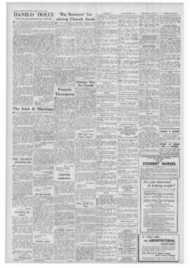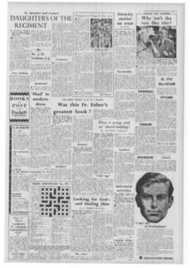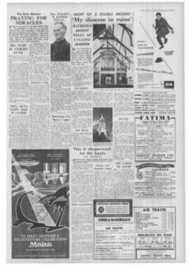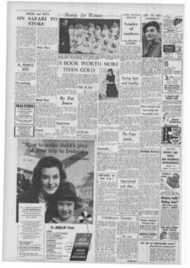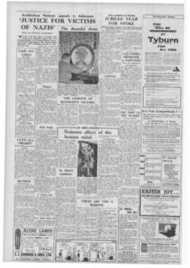Page 4, 13th May 1960
Page 4
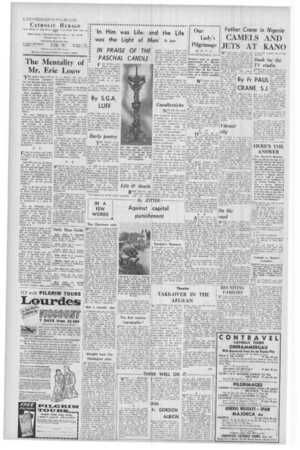
Report an error
Noticed an error on this page?If you've noticed an error in this article please click here to report it.
Tags
Share
Related articles
The Holy Night That Surpasses Even Christmas
A Reminder For Whitsunday
The Wurgy Our Life Eduard 11011i'lle
By Fr. W. A. Hughes, M.s.f.s.,
Next Sunday's Mass
-4( 'In Him was Life: and the Life 4(
Men' • was the Light of Men st.
John
IN PRAISE OF THE PASCHAL CANDLE By S.G.A.
LUFF
IN the Sundays after Easter we embark on a long season in which we study the Word of God, Christ's presence left among us. For part of that time this presence is represented by the solemn Paschal Candle in its great candlestick.
Our meaning was explained by Saint Jerome, writing at Bethlehem in the fourth century: candles were lit, he tells us, "even though the sun shone, not of course because of darkness. but as a sign of joy . . the symbol of a material flame indicating the light of which we read in the psalms: Your Word is a light to my feet."
Early poetry
T""Praise" of the Paschal Candle, sung at the Holy Saturday ceremony. dates from the earliest days of the Church's freedom. There have been many versions, but the form we still use retains much of our earliest poetry surrounding this symbol of the candle.
Its light is the illumination given to a darkened world by Christ's rising; it is His grace disbanding the forces of sin; His joy dispelling sorrow, His peace overcoming hate and oppression; it is a sacrifice of consuming flame; it is Christ's humanity brought forth by a Virgin Mother as the bee makes wax; it is a source of life shared yet inexhaustible.
The importance of 'this hymn
The 12th century candlestick from Gloucester Abbey which is now in the Victoria and Albert Museum. The central knob carries representations of the
four evangelist&
is such that its introduction and composition closely resemble that of the Canon of the Mass. Eusebius, a fourth-century writer, says that lights in the church at this Easter vigil turned night into day—just what Redemption did to history!
Life & death
BOTH Baptism and death are closely associated with the Easter
candle. It was at Easter that Baptisms originally took place, and to remind us of this the new rite has provided for a renewal of our Baptismal promises, during which we hold lighted candles as a sign of our faith.
In some churches nowadays the Paschal Candle is placed finally in the baptistery as a sign of the Risen Christ Whose life is conferred there.
At more solemn funerals the carrying of lights is one of the most ancient Christian customs, an affirmation of our faith in resurrection. A blaze of candlelight is recorded at the funerals of Constantine (337), St. Paula (404). St. Germanus (448). and St. Radegund (587).
Candlesticks
NOT only the candle but its sconce have been throughout history objects of special care. In the Temple of Jerusalem itself there was a famous gold "candlestick" with seven branches, which St. Gregory insisted was a prophetic sign of our Redeemer.
In the Middle Ages the great schools of metal craft, such as Brunswick, produced many famous candlesticks.
Our photograph is of the twelfth century Gloucester Candlestick. How it ever left Gloucester Abbey and reached Le Mans in France, is not known, but after the Revolution it passed into the hands of a Russian prince, on whose death it was purchased for the Victoria and Albert Museum, where it may still be seen.
The function of these great candlesticks as symbols of Christ, the Word, is indicated in representations of the four evangelists around its central knob, and this inscription which, translated, reads: "The debt of light is the practice of virtue; radiant doctrine instructs men lest the darkness of evil overtake them."
blog comments powered by Disqus



